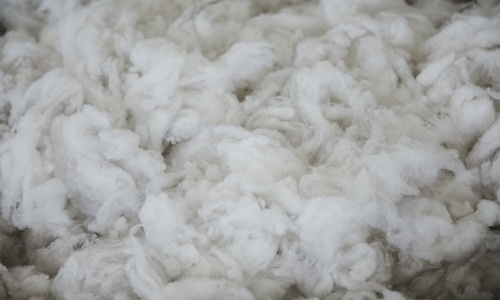"Woolgrowers at the event said, production has serious limitations. In Australia, the producer of over 80 per cent of the world fine apparel wool, production growth is limited by the lack of Merino ewes, the high lamb and mutton price, poor seasons, wild dog predation, land committed to cropping and in some cases a lack of infrastructure and even expertise amongst prospective woolgrowers. In New Zealand, land suitable for Merino wool growing is limited partly due to similar factors in Australia but also the drive to preserve some high-country areas for conservation."
 AWI, in its monthly report, examined the global and domestic state of the wool industry in light of the recent World Merino Congress in Montevideo, Uruguay, coupled with record prices at Australian wool sales and a recent Australian wool production forecast.
AWI, in its monthly report, examined the global and domestic state of the wool industry in light of the recent World Merino Congress in Montevideo, Uruguay, coupled with record prices at Australian wool sales and a recent Australian wool production forecast.
The World Merino Conference was held in May 2018 in Montevideo, Uruguay. It was attended by over 400 delegates from Australia, New Zealand, South Africa, Uruguay, Argentina, Lesotho, Russia, United States and Portugal. Despite the optimism that the conference hoped to convey, there was a hint of pessimism given the Merino wool producing countries’ inability to lift production.
Socio-political limitations
Woolgrowers at the event said, production has serious limitations. In Australia, the producer of over 80 per cent of the world fine apparel wool,  production growth is limited by the lack of Merino ewes, the high lamb and mutton price, poor seasons, wild dog predation, land committed to cropping and in some cases a lack of infrastructure and even expertise amongst prospective woolgrowers. In New Zealand, land suitable for Merino wool growing is limited partly due to similar factors in Australia but also the drive to preserve some high-country areas for conservation.
production growth is limited by the lack of Merino ewes, the high lamb and mutton price, poor seasons, wild dog predation, land committed to cropping and in some cases a lack of infrastructure and even expertise amongst prospective woolgrowers. In New Zealand, land suitable for Merino wool growing is limited partly due to similar factors in Australia but also the drive to preserve some high-country areas for conservation.
In South Africa, political changes, predation and indeed the development of some areas to mining is impacting growth potential and in Argentina major predation by foxes and pumas are limiting weaning rates to less than 70 per cent for many Merino producers. Wool-growing regions of Patagonia, Argentina have only recently recovered from significant volcanic activity in Chile so there is a myriad of reasons why the global supply of wool is not about to lift significantly, despite the relatively favourable market.
Value for money
Wool price as represented by the EMI has traditionally traded at three to four times the price of cotton as represented by the Cotlook A index and this can be seen above when examining the first 10 years of the graph when comparing the white line of the EMI relative to the orange line of the Cotlook A index. In fact, all fibres other than wool: cotton, acrylic, nylon and polyester, have traded in a band of prices that appear rather flat relative to wool since 2001. The exception is the price spike in late 2010, early 2011 that effected both wool and cotton. One very clear trend when comparing wool to these man-made and commodity fibres is the relative price ratios beyond around 2013-14. Over the past 4-5 years the EMI has clearly pulled away from these fibres, so much so that the current market shows that wool:cotton ratio is currently closer to 7:1 rather than the traditional 3-4:1. It is clear that wool is now perceived as a more valuable fibre relative to cotton, nylon, polyester, acrylic and nylon.
The bottom line is world’s consumers, those who ultimately set the price for wool at the cash register, are willing to pay a premium for Merino wool as a renewable but rare natural fibre and unless consumers know about wool and its superior natural benefits, they will not demand it let alone pay a significant premium for it over these man-made and cellulosic fibres.












